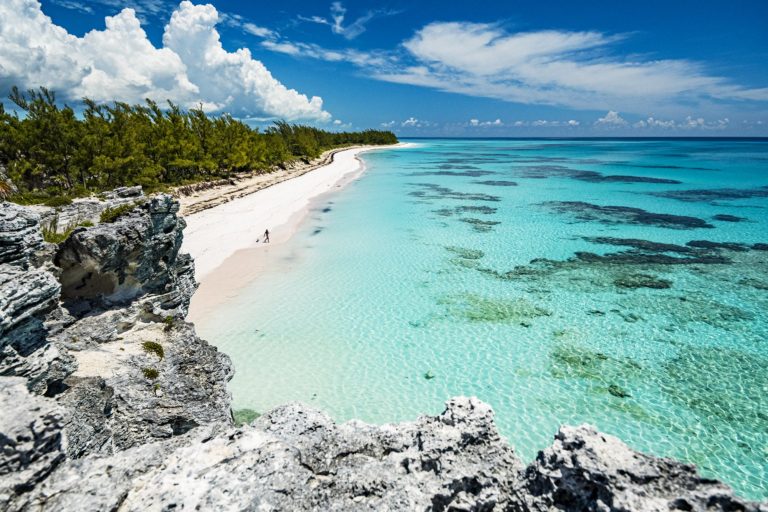International, American, and Bahamian Environmental Groups Slam Disney for Stifling Public Debate over Controversial Cruise Ship Port in The Bahamas
By: Waterkeeper Alliance

Waterkeeper Alliance, Friends of the Earth US, and four Bahamian environmental groups — reEarth, BREEF, Save the Bays, and Waterkeepers Bahamas — expressed serious concerns about Disney’s efforts to rush through environmental approval for their proposed $400 million cruise ship port at Lighthouse Point on Eleuthera in The Bahamas.
Lighthouse Point is a unique natural site beloved by generations of Bahamians and visitors from around the world. The seas surrounding the point are so biologically rich that they have been formally proposed as a Marine Protected Area. The groups are dismayed by indications that the thousands of public comments submitted recently that raised dozens, if not hundreds, of questions about the adequacy of Disney’s environmental impact assessment (EIA) will not get serious consideration.
On May 7th, the organizations submitted detailed comments, including from multiple independent experts, that were highly critical of the adequacy of the EIA. Among its deficiencies, the EIA fails to disclose data about the economics of the project, making it impossible to verify Disney’s claims of benefits for local communities and The Bahamas. The EIA ignores climate risks, COVID, and threats to endangered coral, groupers, and sea turtles. It fails to consider the impacts of operating the port with up to one million visitors each year.
Dinah Bear, former General Counsel at the U.S. President’s Council on Environmental Quality (CEQ), stated, “This document suggests a fundamental misunderstanding of the purpose of EIA…As it stands, the document does not conform to international and U.S. standards for EIA.”
More than 30,000 people joined Friends of the Earth US in submitting comments directly to the Bahamian Government that pointed out these and other deficiencies. Nearly 450,000 people have supported the Stop Disney campaign’s Change.org petition calling upon Disney to rethink its plans for Lighthouse Point.
Under Bahamian regulations, Disney has just 21 business days — or until June 7th — in which to compile all the public comments and prepare responses. Yet in replying to the submission of a comment, Disney Cruise Lines has seemed to make up its mind already: “As we have said from the beginning, we will only move forward with a project at Lighthouse Point if we are able to do so in a way that aligns with our company’s deep and longstanding commitment to the environment. The EIA has confirmed this will be possible – and that there will be no loss of marine or terrestrial biodiversity – with the appropriate environmental management plan in place.”
“Disney’s claim of no loss of biodiversity is no more than ‘greenwashing,’” said Marc Yaggi, Executive Director of Waterkeeper Alliance. “Disney’s EIA does not include any management plans, so how can it be asserted that they are ‘appropriate?’ The EIA did not find threats to species because it did not bother to look at them.”
Disney Cruise Lines references a false alternative — a denser development at Lighthouse Point that was abandoned more than a decade ago — while ignoring a real one: sustainable tourism. Chris Maxey, founder of the Island School in South Eleuthera, recently wrote to Disney’s CEO Bob Chopak to propose an alternative “Disney Land and Sea Legacy Park.” Mr. Maxey added that he hopes the company will decide to “help the Bahamas shift away from a traditional, neocolonial tourist economy toward a more equitable investment in place and culture.” Maxey’s alternative builds upon the “Shared Vision” for a land-based lower-impact tourism development at Lighthouse Point that came out of an initiative of the Nature Conservancy, a long-time Disney partner.
James Lima, a New York real estate and economic development expert who worked on the Shared Vision plan, pointed out that such tourism would provide 27 more times the benefits of Disney’s proposed cruise ship port. Lima wrote, “it is more confounding and disturbing than ever that a powerful White male-dominated American corporation like Disney would continue to pursue unnecessary and offensive development efforts in a poor community of people predominantly of African descent, essentially perpetuating the cruelty and cynicism of Colonialism.”
“We are extremely disappointed in Disney’s decision to push ahead with the Lighthouse Point proposal based on a shoddy environmental assessment and an abbreviated public consultation,” said Marcie Keever, Oceans & Vessels program director at Friends of the Earth US. “Disney has been at the top of FoE’s Cruise Ship Report Card for several years, including an “A” for transparency. “Disney must continue to uphold its good reputation instead of putting the region’s biodiversity in danger and failing to protect Lighthouse Point.”
“One would expect that Disney, with its long history of storytelling about wildlife and nature, would be a leader on climate change, but the Lighthouse Point EIA tells a different tale,” said S. Jacob Scherr, former International Program Director at the Natural Resources Defense Council and a senior advisor to the Last Chance campaign. He added that: “According to independent technical experts, the EIA fails to take account of the project’s own significant emissions or the risks from storm surges and coastal flooding associated with a changing climate and rising seas. Disney is not a ‘climate denier,’ but it is a ‘climate ignorer.’”
Sam Duncombe, Executive Director of reEarth, stated, “We want Disney to live up to its environmental commitments, to deal with the new realities of climate change, pandemics, and racial injustice, and to work with the local organizations on truly a transformative development at Lighthouse Point. Environmentalists are ready to cooperate with Disney to find another more suitable site for its port.”
Photo by Shane Gross